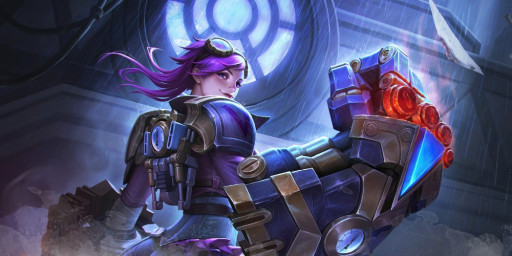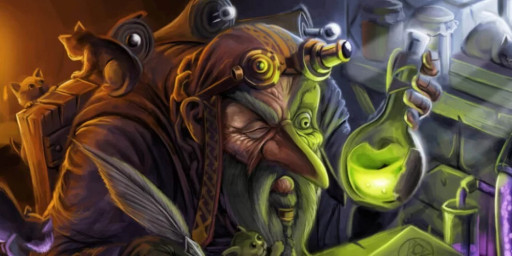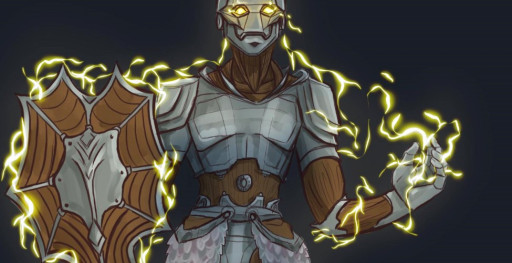
Where some classes are heavily dependent on magic and others see it as beneficial but not entirely necessary, Artificer’s see magic as a challenge, a complex and intriguing puzzle waiting to be figured out. Some will spend their whole lives exploring magic, its capabilities, and how far they can push its boundaries (their resulting isolation can drive them a little bit mad). Others use it in smaller ways, tinkering with their armor or weapons to better suit them and their friends, constantly reaping the benefits of their experimentation, and adjusting their failures.
Trying to pick the best subclass to suit your needs can be an interesting and difficult journey. How are you supposed to pick between playing a battle-weary adventurer who has only ever known war and a trigger-happy gremlin with a desperate need to blow things up?
Fortunately, I’ve ranked the subclasses according to what I think is the strongest and most fun to play.
8. Forge Adept

Destroy your enemies and protect your allies
Great weaponsmiths with a touch of magic and a sword with a bite. Forge Adept is a subclass you might want to try out if you enjoy working with and crafting your own weapons. Having extensive knowledge of weapons and armor can be very helpful during your campaign, especially if your party accidentally comes across a cursed weapon.
Why Forge Adept is OK/Good/Great:
- When attacking with magical weapons, you are able to use your intelligence modifier for your attack and damage rolls. This gives you a great advantage, especially as an Artificer.
- Your spells are designed to protect you and your allies while dealing extensive amounts of damage to your enemies.
- At higher levels, you can help your party members deal extra damage to your enemies and you can channel elements so you can deal even more damage.
Forge Adept Details: http://dnd5e.wikidot.com/artificer:forge-adept
7. Mastermaker (HB)

Replace your limbs with magically improved ones
Why be normal when you can be a cyborg? By using nonmagical materials and a bit of their magical genius, the Mastermakers have found a way to replace their limbs with stronger ones that function as weapons. Who wouldn’t want to trade their arm for an enhanced one that can slap someone three ways to Sunday?
Why Mastermaker is OK/Good/Great:
- Battlefist: a magical replacement for your arm, that you can use as a spellcasting focus and add infusions to as if it were a nonmagical weapon.
- At higher levels, you can attack your enemies twice while dealing extensive amounts of bludgeoning damage.
- When they get to the point where one cannot tell if they are man or machine, Mastermakers can choose to consider themselves a construct and force spells to affect them as such, gaining resistance to poison and psychic damage and immunity to the poison condition.
Mastermaker Details: http://dnd5e.wikidot.com/artificer:mastermaker
6. Alchemist

The one party member crazy enough to see what happens when you mix two potions together
What is an Alchemist, if not a mad scientist hoping to discover the secrets of the world? They are the brewers of the party and are able to craft potions and elixirs to either save or harm; people are never quite sure which. While Alchemists have the potential to be healers, the draw to chaos is very tempting and unavoidable, and it can be a lot of fun in most cases. They can be a bit more difficult to play, but if you keep track of your inventory and what you are able to do, then you will be able to play your alchemist to their fullest potential.
Why Alchemist is OK/Good/Great:
- They can grant members of their party, and themselves, temporary hit points when they drink one of their experimental elixirs.
- They gain bonuses when healing or dealing damage (acid, fire, necrotic, and poison).
- At higher levels, their true mad scientist can be seen when they gain resistance to acid and poison after working with those two elements for so long. Their immunity to the poisoned condition only furthers the idea of the mad scientist who spends their days experimenting on themselves.
Alchemist details: http://dnd5e.wikidot.com/artificer:alchemist
5. Artillerist

Obliterate your enemies with a handheld cannon
Some players want to fight and take enemies out with a well-placed stab. Other players just want to blow stuff up. Artillerists are best known for their Eldritch cannons, but they can also be the defenders of the group, depending on the way they use their spells.
Why Artillerist is OK/Good/Great:
- They can construct a little cannon, which can either be held or stand on its own, that has an extensive number of destructive options that improve as you level up.
- If you want to cause a lot of damage quickly, you can have your cannon explode, causing damage to anyone within 20 feet of the cannon
- At higher levels, your cannons can provide you and your allies with half cover when within 10 feet of them.
Artillerist Details: http://dnd5e.wikidot.com/artificer:artillerist
4. Maverick (HB)

It’s always fun to surprise your enemies by using a warlock spell when you definitely should not be able to use a warlock spell
A jack of all trades and master of none is preferable to a master of one. Mavericks are an interesting, unofficial subclass developed by Keith Baker. If you feel like playing with the spells of other classes while still gaining the benefits of the Artificer, you might enjoy playing a Maverick.
Not only can you swap out cantrips after you’ve finished a short rest, unlike any other artificer who has to wait until they’ve leveled up before they can change their cantrips, they also gain an additional cantrip.
Why Maverick is Ok/Good/Great:
- You gain an extra bonus (+1) to your attack rolls (unless your spellcasting focus grants a higher bonus) that increases as you level up.
- Arcane Breakthrough allows you to learn the spells of another class. You can add additional classes as you level up.
- At higher levels, when using a spell prepared with Arcane Breakthrough, you can cast the spell two slot levels higher than it is without expending the higher spell slot.
- You gain an additional spell slot for each spell level that you can prepare.
Maverick Details: http://dnd5e.wikidot.com/artificer:maverick
3. Archivist UA

Use fantasy AI to your advantage and freak your enemies out with tiny intimate object ghosts
An Artificer who was more of a scholar than an inventor and determined to find a better way to store knowledge, the Archivist, found a way to give a tiny nonmagical object a brain and proceeded to use that brain to further their research. Archivists are still inventors, and their value of knowledge has made their inventions that much more interesting.
Why Archivist is OK/Good/Great:
- They can attack from a distance through the brain of the artificial intelligence they created by manifesting the brain outside of the object as a spectral presence and using it as a spellcasting focus (which they can do if they have the brain’s “body” in hand).
- Your character can gain proficiency in 2 skills, depending on the material that was used to create the artificial intelligence.
- Not only can you choose to see and hear whatever your little artificial intelligence can see as a spectral presence, but you are also able to communicate with anyone carrying one of your artificer infusions (and they can communicate back).
- You can magically overload the thoughts of a creature within 5 feet of you or your little brain’s spectral presence, causing psychic damage which increases as you level up. If you’re willing to expend a spell slot, you can do extra damage, and at higher levels, you can stun a target until the end of your next turn.
- You can teleport through your artificial mind either in an occupied space near it or one of your infusions.
Archivist Details: http://dnd5e.wikidot.com/artificer:archivist-ua
2. Battle Smith

Take out enemies with your extensive knowledge of weapons and the metal contraption that you treat as a pet
If you’ve ever wanted to run into battle with a metal force of nature at your back, you’d probably enjoy playing as a Battle Smith. Not only are you able to protect your party members from enemy attacks, but you are also able to deal extensive amounts of damage, whether that be with your spells or just straight up hitting an enemy until they die.
Why Battle Smith is OK/Good/Great:
- Steel Defender: A companion off and on the battlefield that can help deal damage and cause mayhem, dealing extensive damage to either whatever creature you’re attacking or to one they’ve set their sights on.
- You can use your intelligence modifier when attacking with a magical weapon
- When you or your Steel Defender make an attack, you can heal an ally within 30 feet of the attacked target
Battle Smith Details: http://dnd5e.wikidot.com/artificer:battle-smith
1. Armorer (Original & UA)

Bond with your armor then proceed to obliterate your enemies with it
With the ability to adjust their armor to better suit their needs, it’s a wonder more people don’t pick the Armorer. They are Artificers who have spent so much time tinkering with their armor that it has now bonded with them, becoming almost like a second skin. They can either choose to be more hands-on and upfront fighters or they can disappear into the shadows and attack from a distance. It all depends on the sort of mission the Armorer has taken on.
Why Armorer is OK/Good/Great:
- You can ignore the strength requirement on any suit of armor, meaning if you decide to play a tiny gnome with very low strength, they are now able to wear armor that should crush them under its weight.
- Armor cannot be removed against your character's will and adjusts itself to replace any limbs they might have lost along the way(whether it was from an enemy blow or an experiment gone wrong)
- You can add your artificer infusions to separate pieces of armor and gain two extra infusions, though they do have to be added to the armor
- You can give a creature disadvantage against you while giving yourself an advantage against them until the end of your next turn
- If you decide to subclass as a UA Armorer, you can take on a more defensive role and be a lot more sneaky with armor that becomes form-fitting and wearable underclothes (no disadvantage on Dex (stealth) checks.
Armorer Details: http://dnd5e.wikidot.com/artificer:armorer
Armorer (UA) Details: http://dnd5e.wikidot.com/artificer:armorer-ua
You may also be interested in: